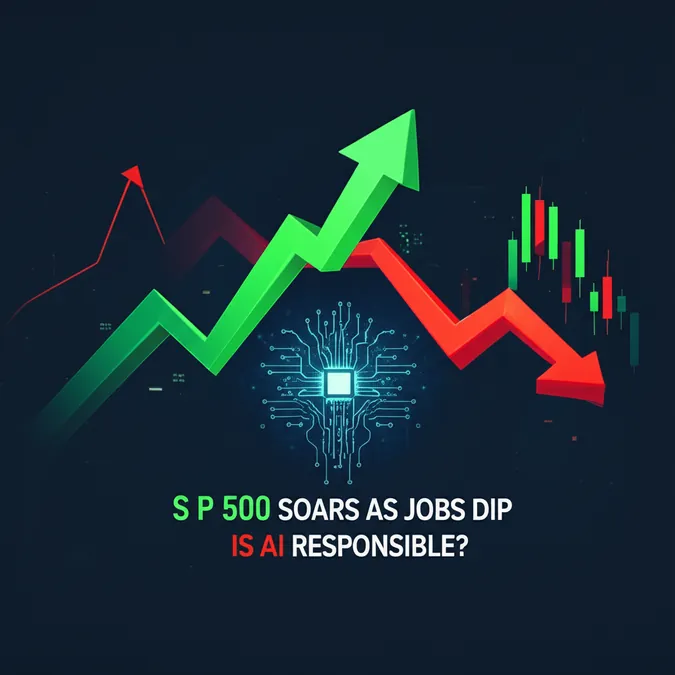Developer Offer
Try ImaginePro API with 50 Free Credits
Build and ship AI-powered visuals with Midjourney, Flux, and more — free credits refresh every month.
OpenAI Faces A Trillion Dollar Spending Challenge
The world of artificial intelligence is buzzing with a colossal figure: $1.4 trillion. That's the staggering amount loss-making startup OpenAI is committed to spending on computing power, a sum that raises a critical question for investors and the tech industry alike: can they actually afford it?
The Trillion Dollar Dilemma
OpenAI, the company behind the revolutionary ChatGPT, requires a vast amount of computing infrastructure—chips, servers, and datacenters—to train its AI models, generate responses, and develop future systems. This commitment totals an eye-watering $1.4 trillion over the next eight years. When compared to its annual revenues of around $13 billion, the gap seems less like a challenge and more like a chasm.
This discrepancy has become a source of significant market anxiety, fueling concerns about a potential AI bubble and the sustainability of such massive spending sprees across the industry. The optimism of Silicon Valley is being tested as the market grapples with the financial realities behind the AI boom.
Tensions Rise Over Funding Questions
The pressure surrounding this financial gap has led to some tense public exchanges. In a podcast conversation, investor Brad Gerstner of Altimeter Capital described the issue as a question "hanging over the market." OpenAI's CEO, Sam Altman, responded defensively, stating the company's revenue was higher than reported and curtly adding, "if you want to sell your shares, I’ll find you a buyer. I just, enough."
Adding to the uncertainty, OpenAI's CFO, Sarah Friar, suggested that the U.S. government could potentially underwrite some of the chip spending, drawing comparisons to banking bailouts. The comment sparked immediate backlash, forcing both Friar and Altman to issue clarifications. Altman took to X to state firmly, "we do not have or want government guarantees for OpenAI datacenters," asserting that taxpayers should not have to bail out companies that make "bad business decisions."
A High Stakes Race Against Tech Giants
According to tech analyst Benedict Evans, OpenAI is attempting to build infrastructure on par with giants like Meta, Google, and Microsoft. The key difference is that these established players can fund their AI ambitions with massive cash flows from their existing businesses—a luxury OpenAI doesn't have. "It’s trying to bootstrap its way into the club," Evans says.
 Altman believes that $1.4tn can be paid off by future demand for OpenAI products and by ever-improving models.
Altman believes that $1.4tn can be paid off by future demand for OpenAI products and by ever-improving models.
Some of the company's financial arrangements also appear complex and circular. For example, Oracle is set to build $300 billion in new datacenters for OpenAI, which OpenAI will then pay a similar amount to use. In another deal, OpenAI pays chipmaker Nvidia for its essential hardware, while Nvidia invests in OpenAI for non-controlling shares.
Altman's Bet on Exponential Growth
Despite the concerns, Sam Altman remains bullish. He projects that OpenAI will end the year with over $20 billion in annualized revenue and grow to "hundreds of billions" by 2030. His core belief is that future demand for AI will be so immense that the real danger lies in not having enough computing power, rather than having too much.
OpenAI's revenue currently comes from its 800 million weekly users and 1 million business customers. A significant 75% of its income is from consumer subscriptions to ChatGPT. Altman's long-term vision includes growing demand for paid services, other companies using its datacenters, and future revenue from hardware devices being built with designer Sir Jony Ive.
Skepticism in a Jittery Market
Not everyone is convinced. OpenAI remains a loss-making entity, though it disputes the exact figures reported. Some analysts point to concerning trends. Carl Benedikt Frey of Oxford University highlights recent evidence of a slowdown in AI adoption. Data from the U.S. Census Bureau suggests that adoption among large companies has been declining.
"It does suggest that we are at a stage where some users and businesses feel they are not quite getting what they hoped for from AI so far," Frey says, expressing skepticism that OpenAI can hit revenue targets of $100 billion by 2027 without new breakthroughs. OpenAI counters this by pointing to accelerating adoption of its corporate products.
In the end, Altman acknowledges the gamble. "But of course we could be wrong," he wrote, concluding that if they are, "the market – not the government – will deal with it."
Compare Plans & Pricing
Find the plan that matches your workload and unlock full access to ImaginePro.
| Plan | Price | Highlights |
|---|---|---|
| Standard | $8 / month |
|
| Premium | $20 / month |
|
Need custom terms? Talk to us to tailor credits, rate limits, or deployment options.
View All Pricing Details

